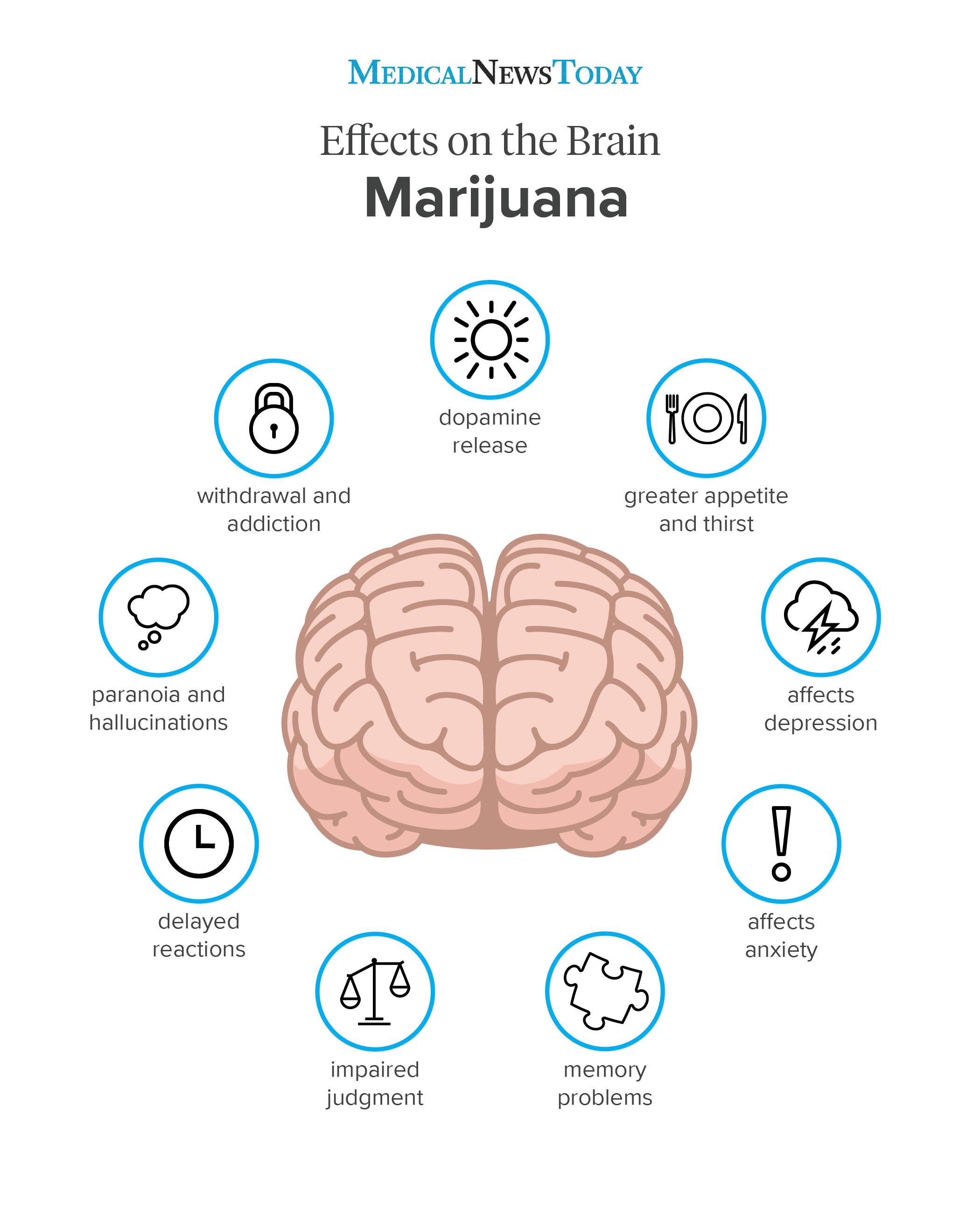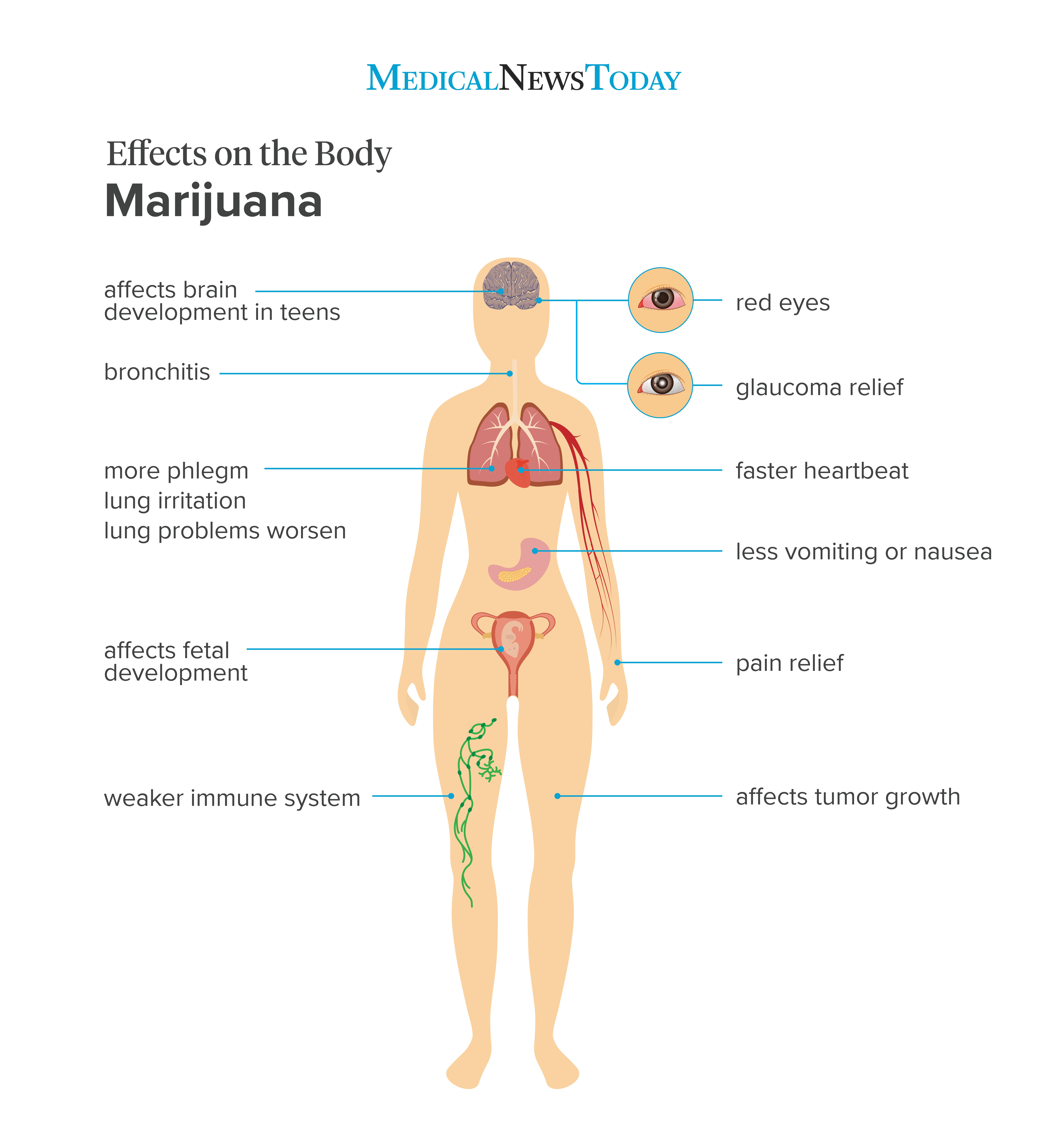Marijuana is the dried and ground up or shredded parts of the cannabis plant. Nearly all parts of the plant make up marijuana, including the leaves, stem, flowers, and seeds. As with other medications and procedures, marijuana use can potentially bring both positive and negative effects.
Many of marijuana’s effects are short-term, meaning that they last for only a short period. Other effects are long-term and may not show up immediately.
There is not much research into the effects of secondhand marijuana smoke. It is possible that secondhand smoke exposure may be enough to cause some of the temporary effects, as well as some of the long-term effects, in some people. More research is necessary to examine the effects of secondhand marijuana smoke.
Often, a person will smoke marijuana to feel its effects. However, a person could also:
- vape it
- cook it into food
- use it as part of an oil
- brew it with teas
- use other topical or oral marijuana products
The following article discusses some of the potential benefits and side effects that marijuana has on the body.
Some of the most common effects on physical health from marijuana use include:
- a higher likelihood of developing bronchitis, when a person smokes it
- more phlegm, when a person smokes it
- lung irritation from irritants including some carcinogens, such as accidentally burning the mouth or throat when smoking
- a weakened immune system due to the effects of tetrahydrocannabinol, which is the main psychoactive chemical in marijuana
- pain relief
- reduction in vomiting and nausea
- faster heart rate by 20–50 beats per minute
- red eyes from the increase in blood flow
- relief from the symptoms of glaucoma, for short periods
- aggravation of existing lung conditions, such as asthma, when a person smokes it
- potential interference with tumor growth
- interference with fetal development during pregnancy
- interference with brain development among teenagers
When people use it medically, marijuana is often useful for the following:
- reducing pain associated with certain medical conditions
- reducing inflammation
- helping with glaucoma
- reducing nausea in people undergoing chemotherapy

Some of the most common effects a person may experience include:
- increased appetite and thirst
- increased or decreased depression symptoms, depending on the user
- increased or decreased anxiety symptoms, depending on the user
- impaired judgment, making it harder for people to think clearly
- problems with memory
- the release of dopamine, which causes the feeling of being high
- symptoms of withdrawal after long-term use
- delayed reactions to stimuli
- temporary paranoia and hallucinations
- addiction, in some cases
Marijuana has many potential psychological effects, and it is worth noting that this is not a comprehensive list.
Marijuana is only potentially safe for use by adults.
Children and teenagers are susceptible to potential ill effects. When a mother uses marijuana while pregnant, the baby may develop memory and concentration issues as they grow.
Breastfeeding mothers who also use marijuana may be exposing their baby to its potentially harmful effects. Women should avoid using marijuana while pregnant and breastfeeding.
Marijuana may affect the brain development of older children and teenagers. This can lead to memory loss, concentration issues, and impaired problem-solving skills.
Research strongly suggests that for those under 25 years of age, marijuana use can impair memory and learning ability.
Long-term effects depend on several factors, including:
- how a person uses marijuana
- how often they use it
- the age of the person using it
- how much a person uses at any given time
Some of the potential long-term effects include the following:
- memory loss
- concentration and memory issues from exposure while in the womb
- lung irritation
- possibly lung cancer, although research does not fully support this
- development of cannabinoid hyperemesis syndrome, which causes nausea and vomiting
Marijuana has many potential short- and long-term effects on the body. Although many proponents believe that marijuana is a modern day cure-all, others believe that its negative effects outweigh its potential medicinal benefits.
People have used marijuana recreationally for many years. As of 2019, 34 states in the United States have some form of legal cannabis. A few states have also legalized its recreational use.
In states where recreational use is still not legal, people should consider other approaches and speak to their healthcare provider about what is best for them.

